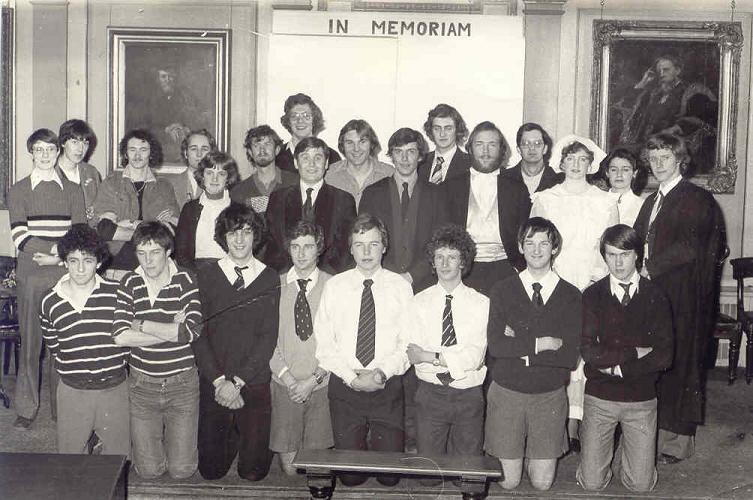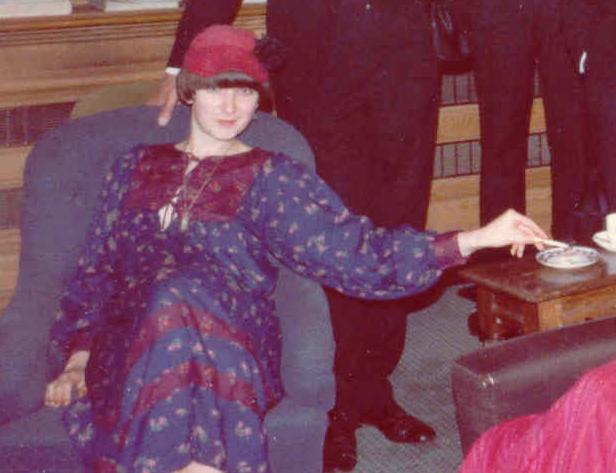[Dr. Chris Oakley's home page] [Dr. Chris Oakley's CV]
Warning: this page is mostly about name dropping. If you find this activity offensive, then please hit the "Back" button now.
I very nearly did not go to Oxford; I had been rejected by King's College, Cambridge, but had offers from Durham University and Imperial College in London to start in October 1976, either of which I could have easily taken up, especially as Imperial was reputedly the best place to study physics in the U.K. at the time. But my uncle John (who was an alumnus) arranged an interview with the then tutor in physics - Dr. Peter Fisher - at Trinity College, Oxford in the summer of 1976, and with the encouragement of his father, my grandfather, I applied and was accepted to Trinity to start in October 1977.
I am very glad that I did.
At Oxford I knew by sight Juliet Adams (daughter of Richard Adams of Watership Down fame) and Maggie Magnusson (daughter of Magnus Magnusson, the TV presenter). Celebrity daughters seemed to be an Oxford speciality, as Peggy Salinger, daughter of J.D. Salinger, author of the cult Catcher in the Rye later came to Trinity when I was a graduate student. Simon Tolkien, grandson of J.R.R. Tolkien, was a student in the year below me, sharing rooms in his first year with a music society colleague. I see that Simon is now making his way as a creative writer in his own right. I wish him every success in his endeavours. My (brief) memory of him is of a world-weary teenager in the obligatory denims, sporting a silk scarf (or something) like a fashion accessory, languidly expressing strong reservations about attending a party that had been organised by one of my contemporaries. I have read about Simon's dispute with his father over the Lord of the Rings films and am totally on Simon's side. I might also add that I find Christopher Tolkien's pedantry regarding his father's work to be inappropriate for such a recent author, especially one so well-known to him.
Although I never joined - the life membership fee being a then - for me at least - astronomical £30, the Oxford Union had, and continues to have a continual stream of A-list celebrities and V.I.P.'s coming to speak.
Trinity's reputation (at the time) as an academic slacker was - from my point of view - belied by the evidence. No longer could I rely on being top of the class with little effort as my tutorial partner, Tim Spiller, was more than a match and we both benefited greatly from what he described as "constructive interference". Tim shared a room with a suave Radleian lawyer called William Sturge whose urbanity and sophistication made us state school students feel gauche by comparison. William directed plays, and as physicists, we were the obvious choice to provide technical services in the form of lighting and sound when he put on Alan Bennett's excellent Forty Years On in February 1979. Stephen Lacey, who played the headmaster, one may find in a tie and gown in the photo by following the line between the "E" and "M" of "MEMORIAM" downwards. He now has a column in the Daily Telegraph and presents TV programs on gardening, as well as having written a number of books on the subject.

The highest head in the photo is mine. The next highest is William. On the the far left, and third from the left in the back row, are the two physicists, Ian Marshall and Tim Spiller, who helped me with the lighting and sound. This play also marked my acting debut. I was Crabtree below, although the audience could not see me.
(A boy should be testing microphones saying 'Testing, testing, testing. One, two, three, four, one, two, three, four.' The lights flicker on and off.)
FRANKLIN: Who's mucking around with the flaming lights? You touch that switch again, Crabtree, and I'll flay the bloody hide off you. What will I do?
CRABTREE: (On the microphone) Flay the bloody hide off me, sir.
FRANKLIN: Right.
HEADMASTER: And don't swear, boy. It shows lack of vocabulary.
(Needless to say, this got a big laugh from the audience.)

This is not exactly a name drop, but here is one person I feel obliged to mention. Do not be fooled by appearances! She may look like some pretty, flighty debutante from a P.G. Wodehouse novel, but this, in fact, was the best tutor we ever had! Caroline Fraser combined economy and precision in the use of words with an incredibly lucid way of thinking, something which made me think of her as a kind of female Dirac. One of the valuable things she did for us was introducing us to Dirac's landmark book on quantum mechanics. One's work would come back marked with her very distinctive italic pen with light-blue ink and her typewritten worksheets ended with a line of characters on the lines of !%$^%^&!*_+~# at the bottom. When asked about this, she would just say, "Oh, I thought I ought to use those, as otherwise the poor things never get used at all." Caroline, I discovered, is unfortunately no longer with us, having contracted malaria after a visit to Africa. She died in 1996, aged just 40.